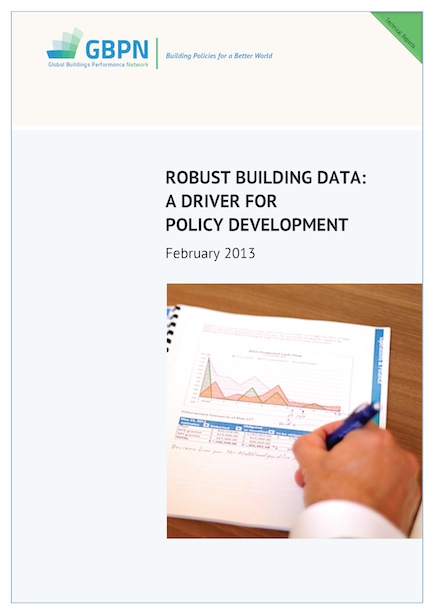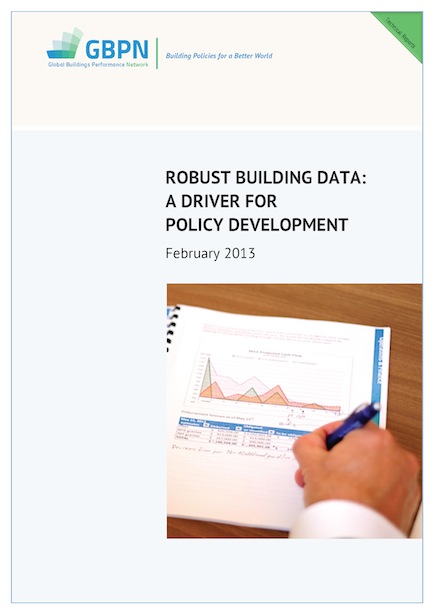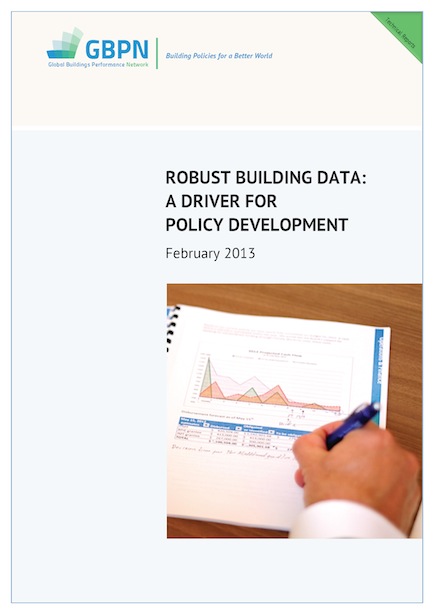印度建筑的减排潜力
 可靠证据表明,至2050年印度建筑领域会产生巨幅能源增长,基于此估测,本报告分析了印度目前建筑节能减排的政策框架及其节能潜力。
可靠证据表明,至2050年印度建筑领域会产生巨幅能源增长,基于此估测,本报告分析了印度目前建筑节能减排的政策框架及其节能潜力。
24 result(s) found
 可靠证据表明,至2050年印度建筑领域会产生巨幅能源增长,基于此估测,本报告分析了印度目前建筑节能减排的政策框架及其节能潜力。
可靠证据表明,至2050年印度建筑领域会产生巨幅能源增长,基于此估测,本报告分析了印度目前建筑节能减排的政策框架及其节能潜力。
 本报告就四个地区数据质量和数据的可利用性问题进行了分析,同时也提醒了我们需要完成多少工作才能建成一个强大而全面的建筑数据库,并提出了实现这个数据库的可行性建议。
本报告就四个地区数据质量和数据的可利用性问题进行了分析,同时也提醒了我们需要完成多少工作才能建成一个强大而全面的建筑数据库,并提出了实现这个数据库的可行性建议。
 本报告就四个地区数据质量和数据的可利用性问题进行了分析,同时也提醒了我们需要完成多少工作才能建成一个强大而全面的建筑数据库,并提出了实现这个数据库的可行性建议。
本报告就四个地区数据质量和数据的可利用性问题进行了分析,同时也提醒了我们需要完成多少工作才能建成一个强大而全面的建筑数据库,并提出了实现这个数据库的可行性建议。
 Data Annex
Data Annex
Discover where things stand regarding building energy data quality and availability in our four regions, this report reminds us of how far we have to go before a robust and comprehensive set of building data is in place and provides some recommendations of how we can get there.
 The Economist Intelligence Unit (EIU) report "Achieving scale in energy-efficient buildings in India: A view from the construction and real estate sectors" commissioned by the GBPN explains the challenges and opportunities of investing in energy efficiency in buildings in India.
The Economist Intelligence Unit (EIU) report "Achieving scale in energy-efficient buildings in India: A view from the construction and real estate sectors" commissioned by the GBPN explains the challenges and opportunities of investing in energy efficiency in buildings in India.
 A report from the Economist Intelligence Unit (EIU), commissioned by the GBPN finds that while India’s commercial building sector has blazed the energy-effiency trail in the building sector, achieving significant scale will depend on efficiency measures becoming standard practice in the commercial middle market, retrofit and, particularly, the residential building segment.
A report from the Economist Intelligence Unit (EIU), commissioned by the GBPN finds that while India’s commercial building sector has blazed the energy-effiency trail in the building sector, achieving significant scale will depend on efficiency measures becoming standard practice in the commercial middle market, retrofit and, particularly, the residential building segment.
 Executive Summary
Executive Summary
GBPN conducted a study on the factors affecting the use of ESCO models for the retrofit of existing buildings in China, identifying current barriers to the development of the Chinese ESCO market, while also researching best-practice examples of ESCOs globally and investigating the feasibility of introducing those examples to China.
Building energy efficiency is an important strategy for reducing greenhouse gas emissions globally. In fact, 55 countries have included building energy efficiency in their Nationally Determined Contributions (NDCs) under the Paris Agreement. This research uses building energy code implementation in six cities across different continents as case studies to assess what it may take for countries to implement the ambitions of their energy efficiency goals.
This report presents the outcomes of a pilot study exploring how the building and planning system is delivering a sustainable built environment in Australia. It identifies four key issues emerging from the research highlighting both the challenges and opportunities in implementing ESD in the built environment in the Victorian context. These are: 1) the gap between the planning and building system; 2) weaknesses in the planning system; 3) governance, inconsistencies, and coordination; and 4) improving the system – networks and advocacy.
This paper introduces the major state-level regulations and policies for improving energy efficiency in buildings. The purpose of the review is to discuss the challenges and issues in policy implementation and the latest trend in adopting innovative instruments. The implementation of customer efficiency programs increasingly incorporates non-price instruments to encourage participation and deep savings. States pay attention to not only code adoption and update but also compliance and evaluation.
The review of policies being implemented in China, the EU, India and the US presented in this report has also identified some key challenges that we must address if we are going to realize the mitigation potential of the building sector. Chief among these is the need to improve our monitoring of the impact that our policies are having. Lack of measured and verifiable data on the influence of policies on building energy performance currently hampers our ability to assess and continuously improve their effectiveness.
This project, “International Review of Residential Building Energy Efficiency Rating Schemes”, is the fifth project in a series of work conducted through the Building Energy Efficiency Task Group (BEET), under the International Partnership for Energy Efficiency Cooperation (IPEEC). This project report presents key governance and administrative considerations in the design of energy efficiency rating schemes, available information on the cost-effectiveness and market impact of rating schemes, barriers to uptake of schemes and lessons learned from the implementation of schemes.
The Dutch Government stimulates the application of energy efficiency measures to reduce the energy requirements of buildings, which are responsible for about 20% of the Dutch CO2 emissions. For our assessment, we followed a qualitative approach, due to a lack of data. We reviewed the mix of policy instruments and used stakeholder surveys and interviews. We found that energy use is not very likely to decline fast enough to achieve the Dutch policy targets for 2020. For new buildings, the policy mix works well, but its contribution to the policy targets is limited.
This report is the first report of the ‘Energy Savings 2030’-project which seeks to help the Coalition for Energy Savings to produce a robust and timely input to the 2030 policy discussion. It brings together and summarises recent empirical evidence on costs and benefits of energy efficiency measures. The evidence gap in terms of reliable ex-post data is well known. In the majority of cases results from ex-ante modelling studies inform the debate. The research carried out for this report confirms the persistent gap in publicly available ex-post evaluations of energy efficiency programmes.
The Energy Efficiency Financial Institutions Group (“EFFIG”) identifies the need to engage multiple stakeholder groups, scale-up the use of several financial instruments within a clear and enforced “carrot and stick” legislative framework. This report identifies a number of approaches and instruments that have proven to encourage investments and multiple market barriers that stand in the way of an energy efficient Europe.
This report sets out the positive and negative impacts of improvements in energy efficiency in buildings that could come about through a recast of the Energy Performance Buildings Directive (EPBD). Successive studies have shown that energy efficiency offers many of the most cost-effective options for meeting global emission targets. In many cases, energy efficiency measures have been shown to be ‘negative cost’, meaning that it would be economically advantageous to implement them.
Global warming and environment problems caused by the excessive emission of greenhouse gases (GHGs), along with rapid economic development has attracted the attention of many countries and regions of the world. Reducing GHG emissions is essential to mitigate the threat of global warming. Household carbon (dioxide) emissions have been recognized as one of the most important contributors to climate change, with a significant impact on both the local and global environment, and various policy instruments have been implemented by governments to bring about the reduction.